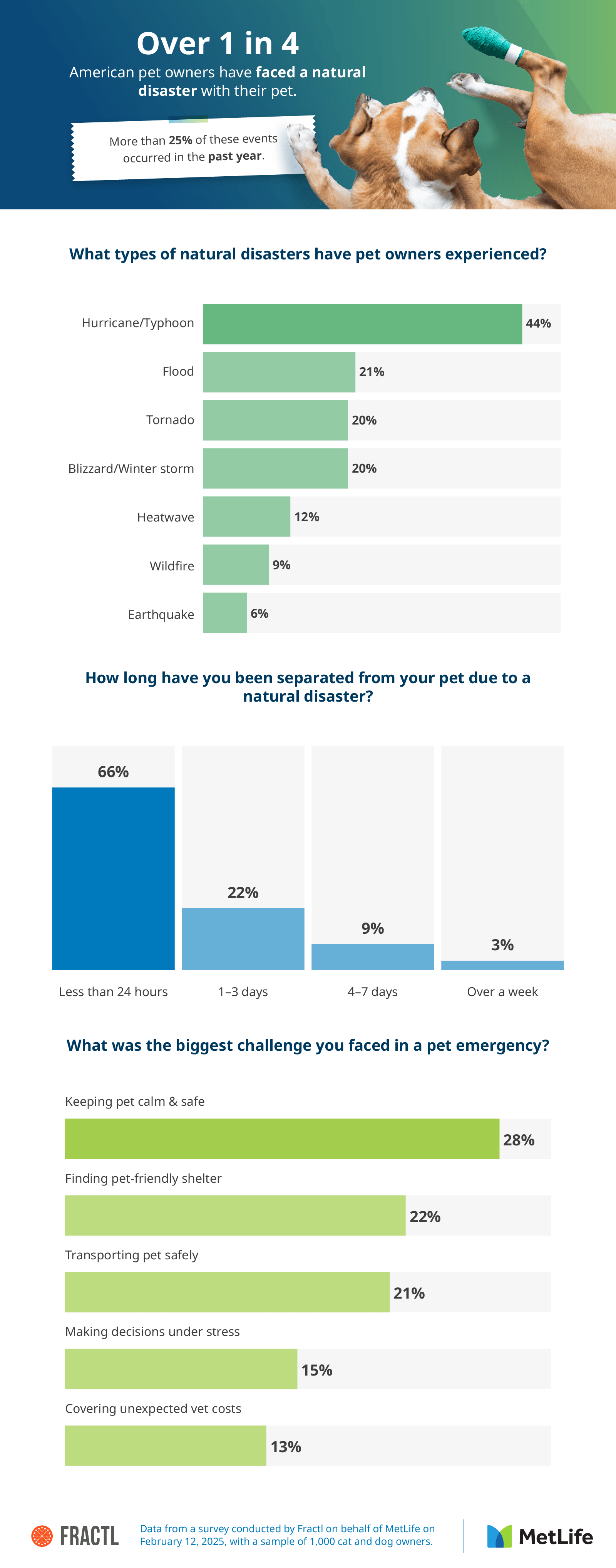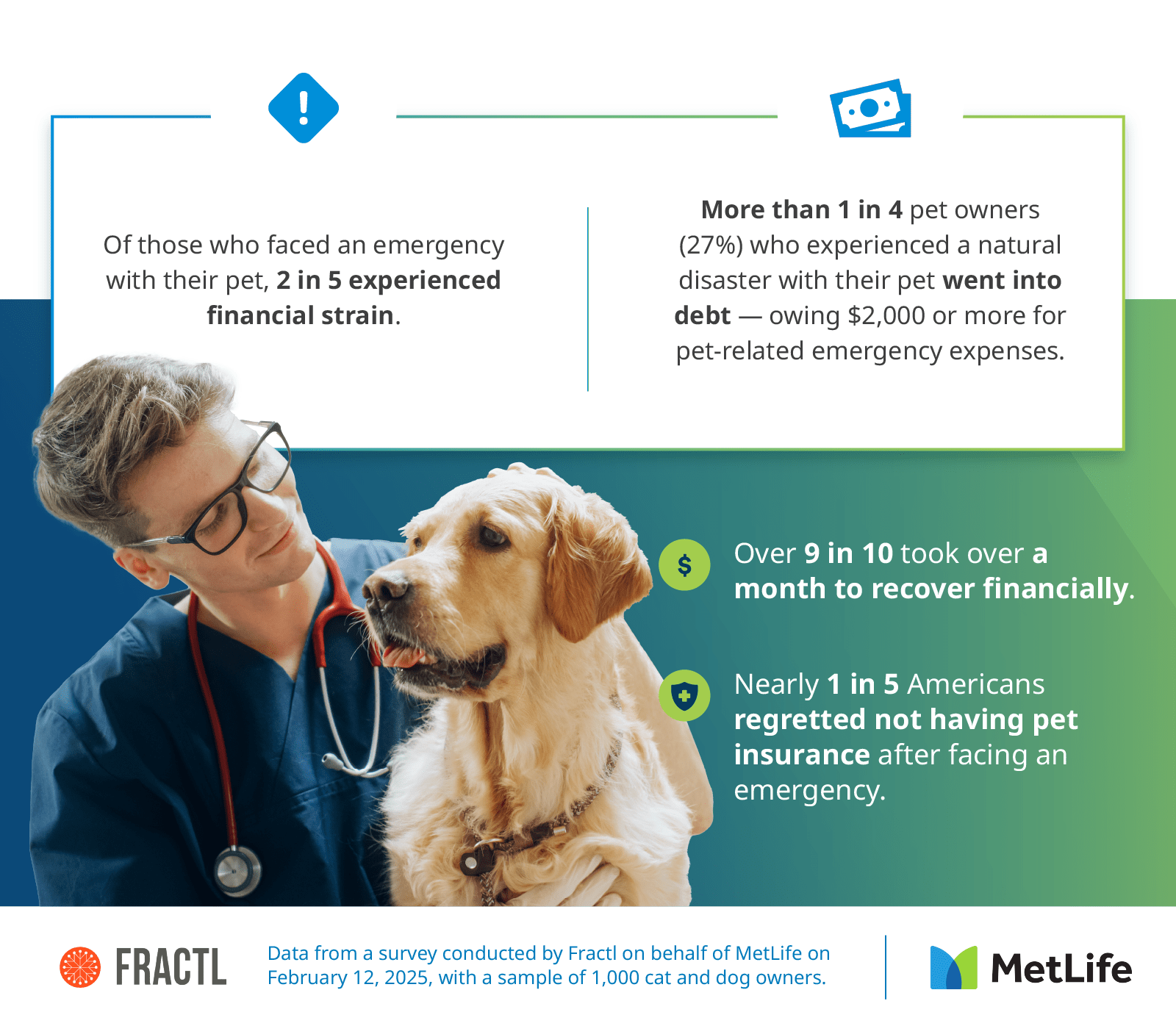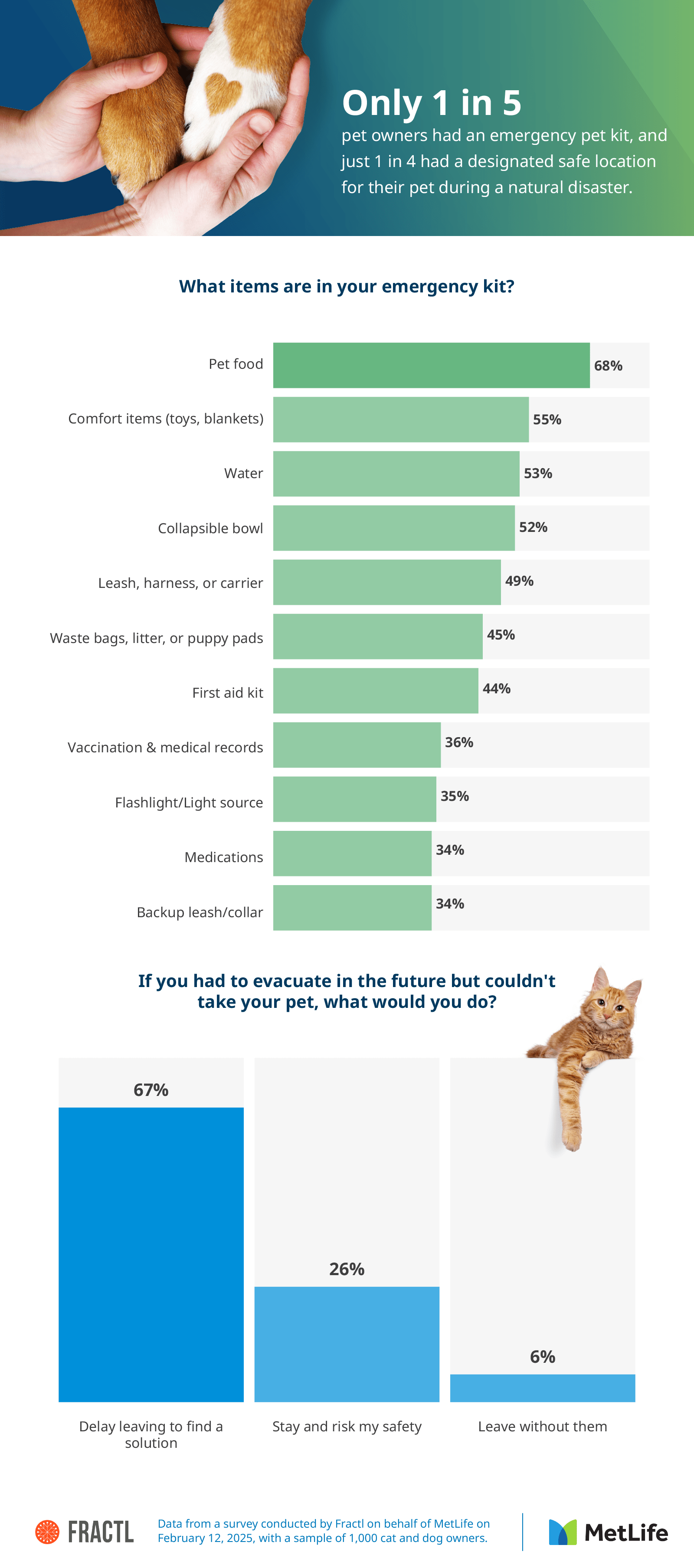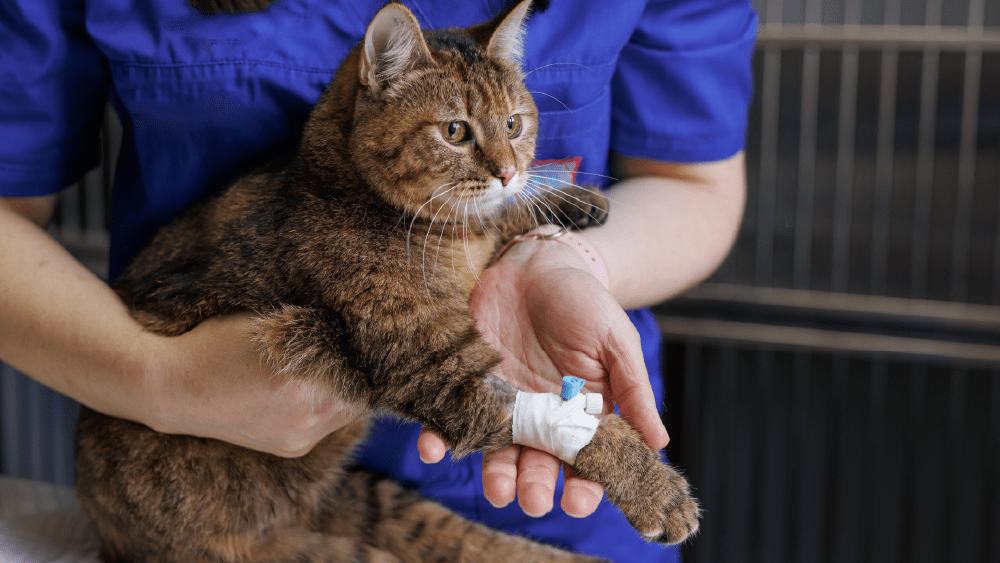PET INSURANCE
Have you ever considered what you would do with your pet during a natural disaster? For many, leaving a furry family member behind is unthinkable. This article explores the real challenges pet owners face in emergencies, from financial strain to tough evacuation decisions. Using insights from a recent study, we highlight preparedness levels, common regrets, and steps pet owners can take to protect their pets — and their finances — when disaster strikes.
Key Takeaways
- Over 1 in 4 Americans have faced a natural disaster with their pet, with more than 25% of these events occurring in the past year.
- More than 1 in 4 pet owners who experienced a natural disaster with their pet went into debt, owing $2,000 or more in pet-related expenses.
- During an emergency evacuation, 2 in 3 pet owners would delay leaving as long as possible to find a safe place for their pet, while over 1 in 4 would stay put and risk their own safety rather than leave them behind.
- Only 1 in 5 pet owners have an emergency kit prepared for their pet, and just 1 in 4 have a designated safe location in case of a disaster.
- Nearly 1 in 5 Americans regret not having pet insurance after facing an emergency.
The Financial and Emotional Toll of Pet Emergencies During Natural Disasters
Natural disasters disrupt daily life and bring significant challenges for pets and their owners. As these emergencies become more frequent, understanding how pet owners manage their pets' safety, unexpected costs, and emotional strain is more important than ever.1

More than 1 in 4 Americans have faced a natural disaster alongside their pet, with a quarter of these incidents occurring within the past year. Keeping pets calm and safe was the top challenge for owners, with 28% struggling to manage their pets' anxiety.2 However, the logistics of disaster response posed additional hurdles — 22% had difficulty finding pet-friendly shelters, while 21% had trouble safely transporting their pets.
Making quick decisions under stress was another challenge, with 1 in 7 pet owners finding it difficult to act swiftly in emergencies. Financial strain further complicated matters, as 13% reported struggling with unexpected veterinary expenses.3 Despite the chaos, reunions happened relatively quickly — two-thirds of separated pets were reunited with their owners within 24 hours.

Financial hardship was a common struggle among pet owners affected by natural disasters, with 2 in 5 experiencing economic strain.4 Younger generations felt the impact most, as nearly half of both Gen Z (49%) and millennials (45%) reported financial stress.
One-third of pet owners have had to decide between covering their pet's needs and maintaining their financial stability. Over a quarter of pet owners accumulated $2,000 or more in pet-related expenses, and 1 in 7 went into debt, owing an average of around $950. For some, the debt burden was long-lasting — 1 in 20 had yet to recover financially.
In hindsight, many pet owners wish they had been better prepared. Nearly 1 in 5 regretted not having pet insurance when an emergency struck.5 This sentiment was even stronger among younger generations — 1 in 4 Gen Z and nearly 1 in 5 millennials wished they had been covered. As a result, about a third of pet owners considered purchasing pet insurance after experiencing a natural disaster.
Preparedness and Priorities: How Pet Owners Manage Emergency Situations
When disaster strikes, pet owners have varying levels of preparedness and risk tolerance. While some take proactive measures, others prioritize staying with their pets — even at personal risk.

Only 1 in 5 pet owners (20%) have assembled an emergency kit specifically for their pets, and just 25% have identified a safe location for them — both critical steps in disaster preparedness.6,7 Despite these low preparedness rates, most pet owners were unwilling to leave their pets behind during a natural disaster.
If they had to evacuate in the future but couldn't take their pet, 67% said they would delay as long as possible to find a solution and ensure their pets' safety. For some, the commitment to their pets extended to personal risk: 26% of pet owners said they would stay at home rather than abandon their animals. Only 6% would evacuate without their pets.
Some pet owners have taken additional precautions to enhance pet safety. Among those who have an emergency kit, 34% included pet medications to ensure they could meet their animals' health needs during a crisis. Additionally, half of American pet owners have microchipped their pets, greatly increasing the chances of reunification if they become separated during a disaster.
Enhancing Preparedness for Pet Owners
Natural disasters test the strength of the bond between pet owners and their animals, often forcing difficult decisions. While many pet owners are unprepared, simple steps — like assembling emergency kits, identifying safe locations, and securing pet insurance — can make all the difference. Planning ahead not only protects pets but also eases the financial burden when disaster strikes. By taking proactive measures now, pet owners can ensure they're ready for any emergency, keeping their beloved companions safe no matter what comes their way.
Methodology
This survey, conducted by Fractl on behalf of MetLife on February 12, 2025, questioned 1,000 American pet owners to explore how prepared they are for natural disasters. The average age of respondents was 41; 51% were female, 48% were male, and 1% were nonbinary. Generationally, 10% were baby boomers, 24% were Gen X, 50% were millennials, and 16% were Gen Z.
About MetLife
MetLife Pet Insurance provides pet insurance solutions for pets, offering pet owners financial security and peace of mind when it comes to veterinary care. We can cover everything from routine check-ups to emergency services depending on your level of coverage and the plans you choose. Help your pets get the care they need and worry less about the costs.
Fair Use Statement
Feel free to share these findings for noncommercial purposes, but include a link to this page.

